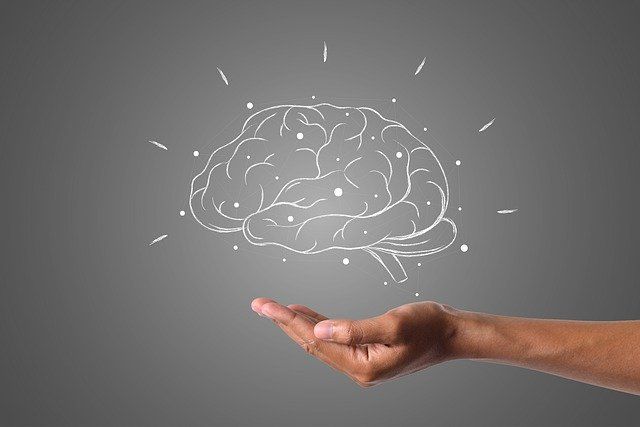A great number of kids say they would want to be a teacher when they grow up, but only a few of them opt for teaching as a profession later in life. The reason behind this disparity is the highly demanding nature of the job. A teacher receives both love (respect) and hate (disrespect) from students. Students spend long hours with the teacher, and the smallest shift can decide if the teacher is viewed as a friend or enemy.
Teachers play a crucial role at any age in a person’s life, but they have the most influence during childhood. A teacher teaches the basics of every academic subject and life to young kids. To accomplish such a big feat, a teacher should be skilled, experienced, a good listener, supporting, understanding, and always ready to guide students. A good teacher creates interest in learning, teaches good interpersonal skills, enhances creativity, and helps identify interests in a student. Such exceptional goals can be achieved by a very effective technique called mind mapping.
What is mind mapping?
According to Tony Buzan (2000), mind mapping is an application that gives us meaningful information to understand in a simple way. The mind mapping technique helps in processing information logically and imaginatively by constructing a diagram in the brain. It is an essential attribute for teachers in the current time. The technique is easily adaptable, and it helps both students and teachers in the classroom.
Different formats—images, colors, words, arrows, and symbols—are used to create mind maps. These formats are a fun and engaging learning technique for students.
At the same time, mind mapping helps teachers in significant ways. Nowadays, free online mapping software are available, which has increased teachers’ adoption of this technique. Mind mapping helps teachers recognize that engaging students, encouraging activity, and learning is more important than memorizing the concepts.
Given below are mind mapping techniques to help teachers simplify their work and aid effective learning in students. They are broadly categorized into three: pre-class, in-class, and outside class mind mapping techniques.
Pre-class mind mapping techniques for teachers
The pre-class mind mapping technique is helpful to a teacher in planning and organizing. Planning includes preparing a lesson plan, designing class curriculum, and planning assignment timelines. Planning mind maps help in providing a clear, simpler and visual overview of topics to be covered in class.
Teachers have always encouraged their students to learn and write down notes. Note-making improves the learning of complex concepts for most students. Similar jotting down and organizing techniques strengthen the mind mapping skills of teachers. They are the perfect tool to aid teachers in the structural organization of topics and lessons.
In- class mind mapping techniques for teachers
The in-class mind mapping techniques are helpful in oral teaching, handouts, presentations, creativity, and learning. They also help in brainstorming and discussions during teaching. Brainstorming gives rise to innovative ideas in students. In-class discussions encourage students to participate, enhance public speaking skills, and impart full understanding of topics. Inadvertently both types of sessions help students organise and create connections between different ideas, i.e., create new mind maps.
A teacher can easily prepare a mind map for a topic or chapter using online platforms and hand them out to students. These handouts must leave space to add notes during class.
Mind maps in the form of presentations are excellent visual information providers. Presentations encourage students to engage with the topic and develop strong communication skills. They are an excellent way to explain the concept orally with visual aids.
The mind mapping technique is also useful in promoting creativity in students. During class, give creative goals to students and ask how they can achieve them. Support students to convey their ideas even if the ideas seem silly or odd. Creative exercises will encourage activity and enable students to have fun as they learn and think out of the box.
Mind mapping is the most efficient tool in learning. It helps by reinforcing knowledge and making connections between various fields, which provides in-depth knowledge of concepts and subjects.
Outside class mind mapping techniques for teachers
In-class time is limited, and students are advised to devote outside class time for learning. Homework does that job, but inefficiently when the same homework is given to every student. Mind maps help teachers remember the distinct characters of students. The student’s individuality can be considered to allot suitable assignments and extracurricular activities.
The digital age allows students to collaborate digitally with teachers and other students. Cloud solutions provide the platform. They are a blessing in disguise for the shy students who find it challenging to speak in a live class. These online assignments are reflective of the learning of the students and can be used for evaluation by the teachers. Here again, it becomes necessary to apply mind maps for the assessment of students.
Mind maps are also helpful in comprehending new information. Mind maps encourage students to explore the study material to see how much they learned and how far they can go. A mind map can also branch out to new mind maps to facilitate learning.
Conclusion
Mind maps help teachers in encouraging teamwork among students and increasing creative learning. They help students in the learning of complex facts. Online mind mapping tools have made learning easier for both students and teachers.
With Teachmint Integrated School Platform, schools can easily automate almost all the strenuous tasks that otherwise were laborious and time-taking. The LMS portal, performance management, attendance management system, and other valuable features make Teachmint one of the best solutions for educational institutions.






